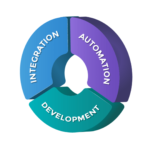Talent mapping is a strategic process that helps organizations identify, attract, and retain the best candidates for both current and future needs. By aligning your workforce with your long-term goals, talent mapping enables you to stay competitive and agile in an ever-changing business landscape. Here are the best tips and practices to elevate your talent mapping efforts:
1. Define Your Objectives
Before you begin talent mapping, it’s crucial to understand your company’s short-term and long-term goals. What skills will your organization need as it grows? Which departments are likely to expand? Define these objectives to create a roadmap for your talent mapping strategy.
Key Tip: Align talent mapping efforts with your organization’s strategic goals to ensure that every role you fill contributes to future success.
2. Understand Your Current Talent Pool
A deep understanding of your current workforce is essential to identify any skill gaps and areas for development. Perform regular assessments to evaluate employee strengths, weaknesses, and potential.
Key Tip: Use skills inventories and performance reviews to create a comprehensive database of your existing talent pool.
3. Segment Your Talent
Segmenting your workforce by role, skill set, or potential allows you to plan more effectively. Look at different employee groups such as leadership, mid-management, and entry-level employees. Each group may have different needs in terms of development and future roles.
Key Tip: Create talent pipelines for different segments, ensuring each has a clear path to future roles within the company.
4. Identify Future Roles and Skills
Stay proactive by predicting the future needs of your industry. What emerging trends might affect your business? Which roles will become more valuable as technology and markets evolve?
Key Tip: Leverage industry research, technology trends, and market analysis to anticipate future skills and roles your organization will need.
5. Competitor and Market Analysis
Understanding what your competitors are doing can provide invaluable insight. Examine their talent acquisition strategies, organizational structures, and the roles they are hiring for. This helps you identify where the talent market is heading and gives you a competitive edge.
Key Tip: Conduct regular competitor analysis to benchmark your talent strategies against others in the industry.
6. Leverage Data and Technology
Use HR analytics and recruitment software to gather and analyze data on potential candidates and internal employees. Talent mapping platforms can help identify where to source talent, assess market trends, and provide insights into the availability of skill sets in various regions.
Key Tip: Integrate talent mapping tools into your HR tech stack to streamline the process and gather actionable data.
7. Build Relationships with Potential Candidates
Talent mapping isn’t just about filling immediate vacancies; it’s about building relationships with individuals who may be a fit for future roles. Engage with passive candidates through networking, events, or social media platforms like LinkedIn.
Key Tip: Develop a talent pool of passive candidates by maintaining relationships with industry professionals who align with your company’s values and future needs.
8. Invest in Employee Development
An effective talent mapping strategy includes a strong focus on internal development. Upskilling your existing employees allows you to bridge skill gaps without needing to source externally. Create clear paths for career progression and offer ongoing training and development opportunities.
Key Tip: Establish internal training programs and mentoring initiatives to develop employees who can step into critical roles in the future.
9. Foster a Strong Employer Brand
Attracting top talent often hinges on the strength of your employer brand. A positive company culture, competitive benefits, and opportunities for growth make your organization more attractive to potential candidates.
Key Tip: Showcase your company culture, values, and success stories through social media, career fairs, and employer branding campaigns.
10. Continuously Monitor and Adjust
Talent mapping should be a dynamic, ongoing process. Continuously monitor your talent pipeline, adjust to changing market conditions, and reassess your strategy as your organization evolves. Being flexible ensures that you are always ready to meet future talent demands.
Key Tip: Conduct quarterly reviews of your talent mapping strategy to ensure it aligns with changing business needs and market trends.
Conclusion
Effective talent mapping is a long-term investment in the future of your company. By proactively identifying and developing talent, you not only fill roles faster but also future-proof your organization against changing market demands. Implement these best practices to build a robust, agile, and highly skilled workforce that can help your organization achieve sustained success.


